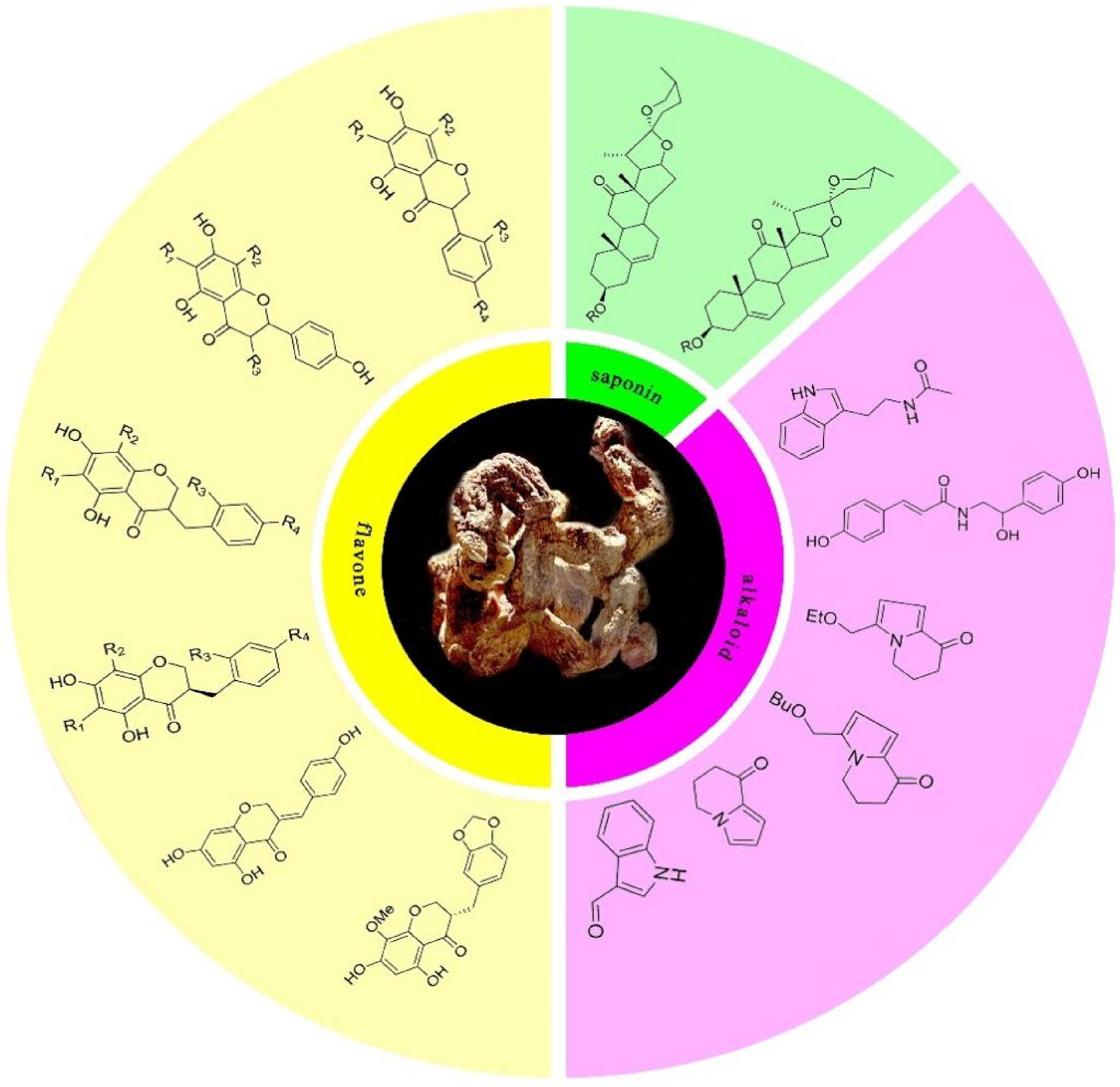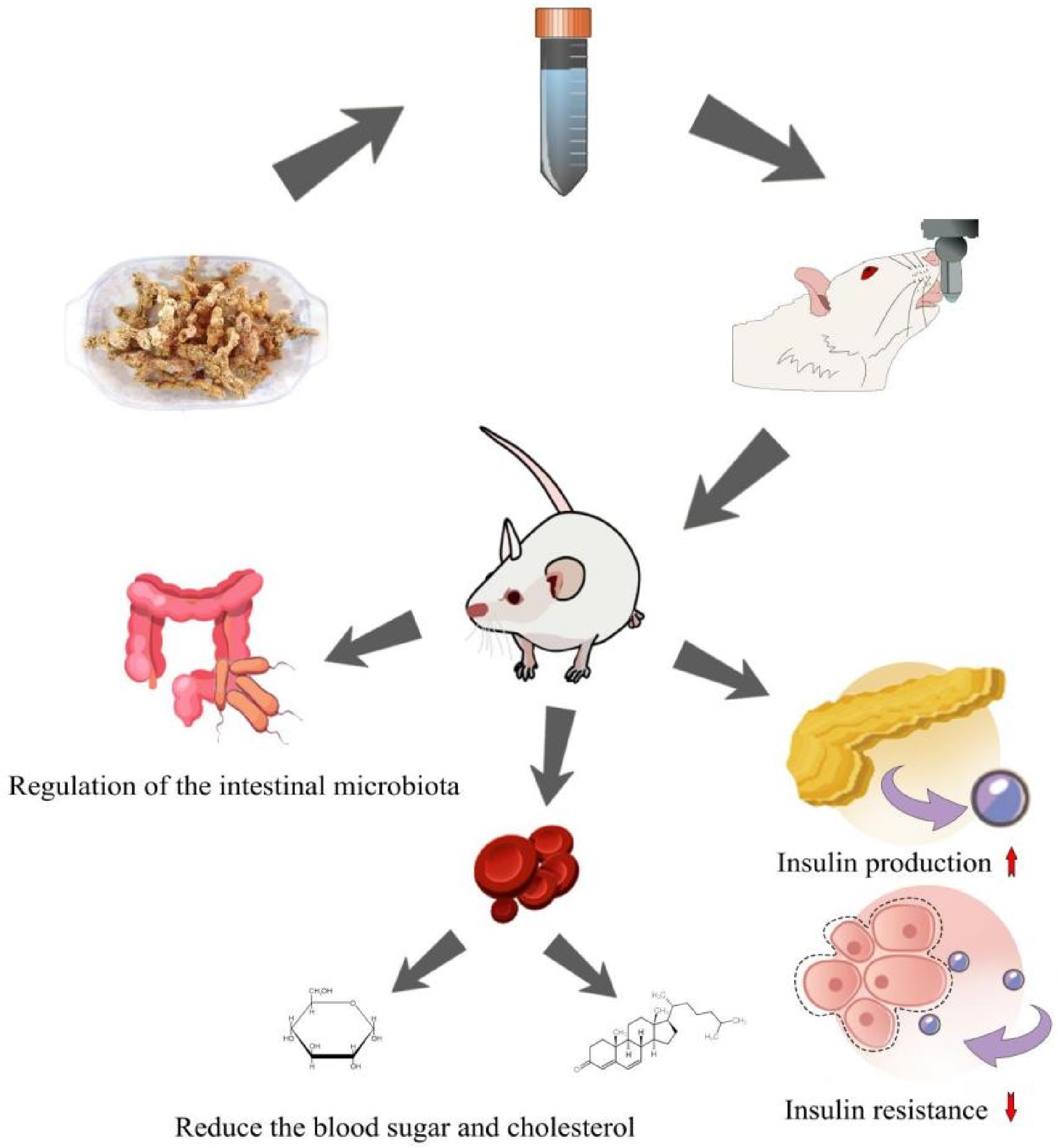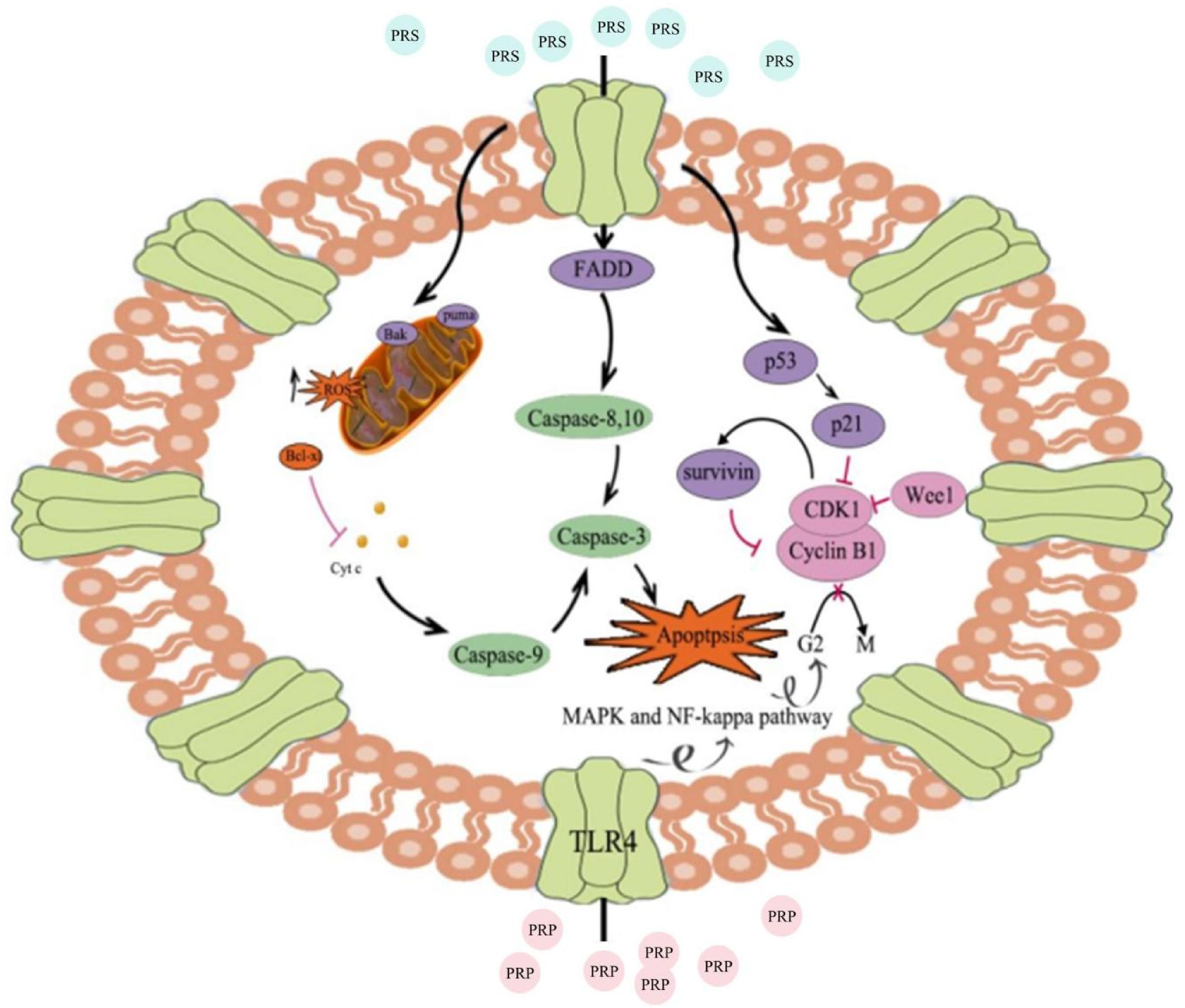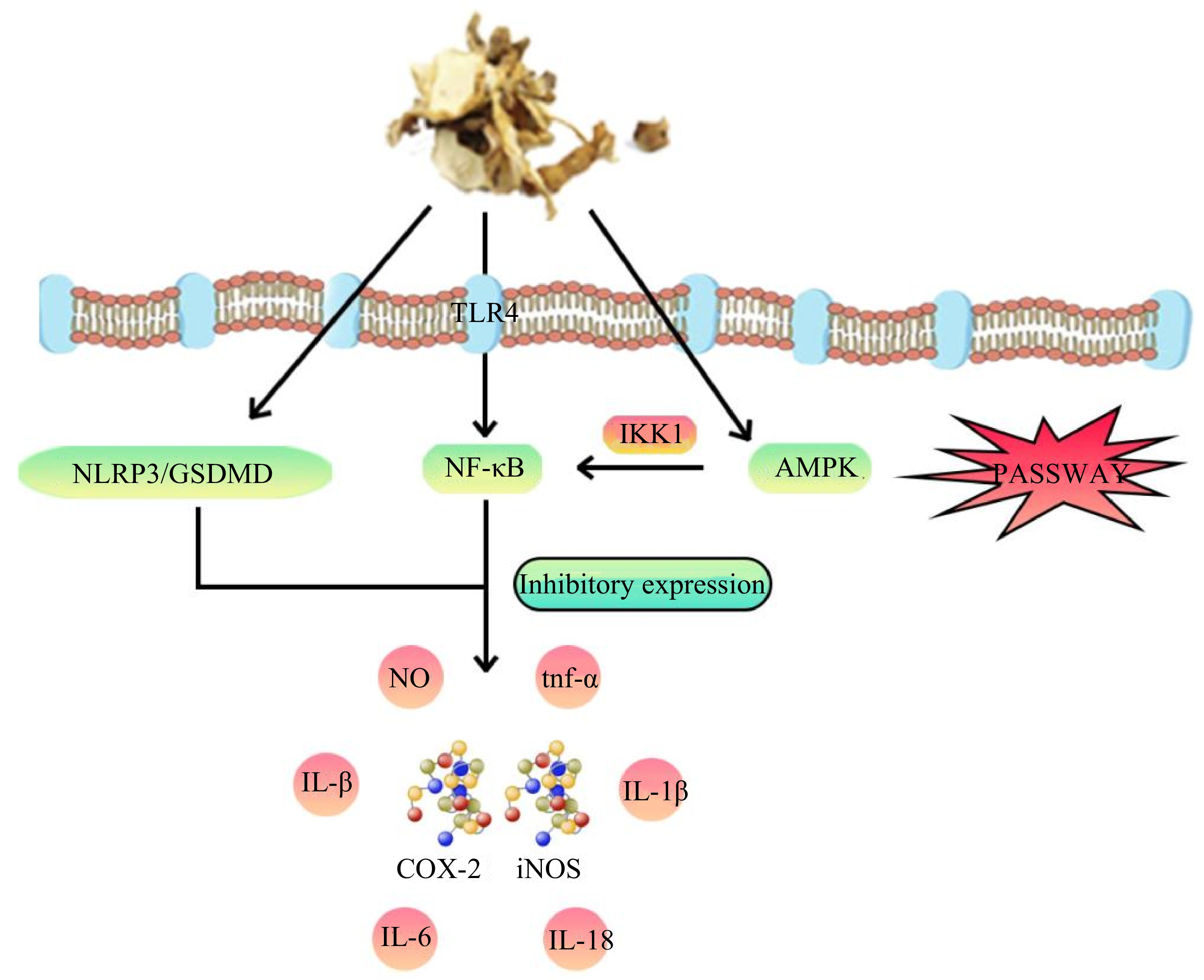-

Figure 1.
Bioactive constituents of Polygonati rhizoma. The representative image of Polygonati rhizoma rhizome surrounded by structural formula of saponin, alkaloid, and flavonoid compounds that have been identified within Polygonati rhizoma.
-

Figure 2.
The influence of Polygonati rhizoma on diabetic model mice physiological regulation. Upon administration of Polygonati rhizoma to diabetic model mice, its regulatory impact is predominantly evident in several aspects, such as modulation of the intestinal microbiota composition, a decline in blood glucose and cholesterol concentrations, enhancement of pancreatic insulin production efficiency, and mitigation of cellular insulin resistance.
-

Figure 3.
Diagram of the mechanism model depicting tumor growth inhibition activity of Polygonati rhizoma. PRS effectively achieves its objective of inducing cell cycle arrest and stimulating tumor cell apoptosis by elevating intracellular ROS levels within tumor cells. PRP accomplishes the same objectives through distinct mechanisms, including activation of the TLR4 signaling pathway and suppression of the MAPK and NF-kappa B activation.
-

Figure 4.
Mechanism model diagram illustrating the anti-inflammatory effects of Polygonati rhizoma. The anti-inflammatory attributes of Polygonati rhizoma predominantly hinges upon its adept modulation of a multitude of signaling pathways, notably encompassing AMPK, NF-κB, and NLRP3/GSDMD. This orchestrated modulation effectively curtails the expression of inflammatory factors, alongside COX-2 and iNOS, thereby culminating in the achievement of its potent anti-inflammatory effect.
-

Figure 5.
Multi-target regulatory mechanism of Polygonati rhizoma on physiological function. Polygonati rhizoma's multifaceted regulatory actions encompass diverse physiological domains, including bone health enhancement, blood lipid level reduction, memory and cognitive function improvement, sleep enhancement, and immune system modulation. These intricate mechanisms collectively contribute to the potential therapeutic impact of Polygonati rhizoma across various aspects of human health.
Figures
(5)
Tables
(0)